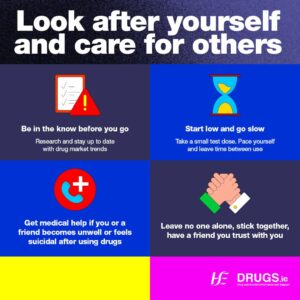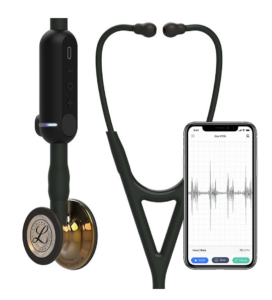Long COVID – Facts, Figures and Management by Medical Professionals

COVID-19 has proven to be one of the most difficult tasks in contemporary medicine to date. Not only as a pandemic that impacts all health professionals’ daily work around the world, but also in terms of long-term effects for their patients. A long COVID resource for medical professionals with the most up-to-date information on this condition can be found here. You can also get it as a convenient leaflet with a patient questionnaire to assist you with the checkup.
In this blog you will learn:
- What is long COVID?
- How frequent is long COVID?
- How long does it last?
- What are the signs and symptoms of long COVID?
- What is the pathogenesis of long COVID?
- Does the severity of acute COVID play a role?
- What are the risk factors for long COVID?
- Why is its monitoring essential?
- What should be monitored at primary care level?
- The Protocol App: a time-saver in long COVID monitoring
What is long COVID?
When we speak of long COVID, we refer to individual or multiple signs and symptoms that continue or develop after acute COVID-19. The term ‘long COVID’ covers ongoing symptomatic COVID-19 (from 4 to 12 weeks) as well as post-COVID-19 syndrome (12 weeks or more). Until 4 weeks after onset, the term ‘acute COVID-19’ is used.

How frequent is long COVID?
Studies are still ongoing, especially at an international scale. A British study shows a prevalence of post-COVID symptoms in approximately one third of the COVID-19 population. Based on studies from different countries, persistent symptoms show in 8-27% of children.
How long does it last?
International research is still ongoing, but there are local data available. Among hospitalised patients in Italy, 32.6% experience problems after 60 days. In France, two-thirds of hospitalised patients experience problems after 60 days . A UK study of people who entered health information into a phone app shows that 22.1% reported problems after 5 weeks, and 9.9% after 12 weeks . According to a German study, only 22.9% of patients are entirely symptom-free at month 12.
What are the signs and symptoms of long COVID?
The signs and symptoms are quite numerous and varied. The most common are the following:
- fatigue
It can be severe and persist after rest. It is somewhat similar to the chronic fatigue syndrome (CFS) - breathlessness
Patients after hospital discharge frequently have pathological pulmonary function tests of the lung function. The lung function improves slowly with time. Prolonged breathlessness is usually not accompanied by any organ changes
- heart-related symptoms
signs of myocarditis, chest pain (can be connected with myocardial damage), symptoms of postural orthostatic tachycardia syndrome (POTS)
- central nervous system-related symptoms
loss of taste or smell; cognitive disorders (brain fog, concentration problems, memory disorders); sleep disorders; anxiety, depression, post-traumatic stress disorder; symptoms of Alzheimer’s (possible onset or worsening investigated); symptoms of Guillain-Barre syndrome (weakness and tingling in limbs); dizziness; balance problems
- thromboembolic events
The frequency of thromboembolic events after acute COVID-19 is <5% (0-3.7 in 30 days). How long patients remain hypercoagulable after acute COVID-19 is unknown. Symptoms: limb aches and cramps
- non-specific symptoms
What is the pathogenesis of long COVID?
It is suspected that long COVID could be caused by permanent damage to the lungs, brain, heart and other organs. The development of autoantibodies is also being researched as a possible cause.
Does the severity of acute COVID play a role?
The onset of more than five symptoms in the first week of acute COVID-19 is significant regardless of gender or age [11]. Nevertheless, the acute phase can also be moderate or mild and/or there can be a period of temporary recovery before the onset of long COVID symptoms.
What are the risk factors of long COVID?
The most important risk factors are more than five symptoms in the first week of illness, advanced age, excessive body weight, being female and asthma.
Why is its monitoring essential?
Long COVID can consist of clusters of symptoms, which often overlap. They can change over time and affect any system in the body. Individual symptoms can last for different time periods. Their monitoring is central to establish how long they last and when they end.
What should be monitored at primary care level?
While considering the known comorbidities, the following monitorings are recommended for basic long COVID diagnostics in primary care:
temperature; heart rate and rhythm; blood pressure; respiratory examination; functional status; pulse oximetry
- clinical testing (if necessary): full blood count; electrolytes; liver and renal function; troponin; C reactive protein; creatine kinase; D-dimer; brain natriuretic peptides; ferritin
- other investigations: chest x-ray; urine tests; ECG
- screening questions: pain, breathlessness, fatigue, physical exhaustion, post-exertional malaise, cognitive disorders, depression, anxiety
The Protocol App: a time-saver in long COVID monitoring
Your patient interview protocol and all-round diagnostics can be performed on one device. This makes managing patients with the same condition much easier and faster. You can create a long COVID examination protocol in the MESI mTABLET – with the following advantages:
- automated questions
- oximetry, spirometry, blood pressure, ECG, ABI and TBI modules on one device;
- regardless of the number of modules purchased, you can always adapt the Protocol to your needs. Enter as many interview questions and measurement results as you wish (temperature, etc.)
- the same quality of care is afforded to your patients even if the staff changes; the Protocol guides you step by step through every stage of the examination.
https://www.hiberniamedical.ie/shop/nursing-home-special-offers/caring-essentials/pulse-oximeters-caring-essentials/mesi-mtablet-system/
Article by MESI, January 25, 2022.





